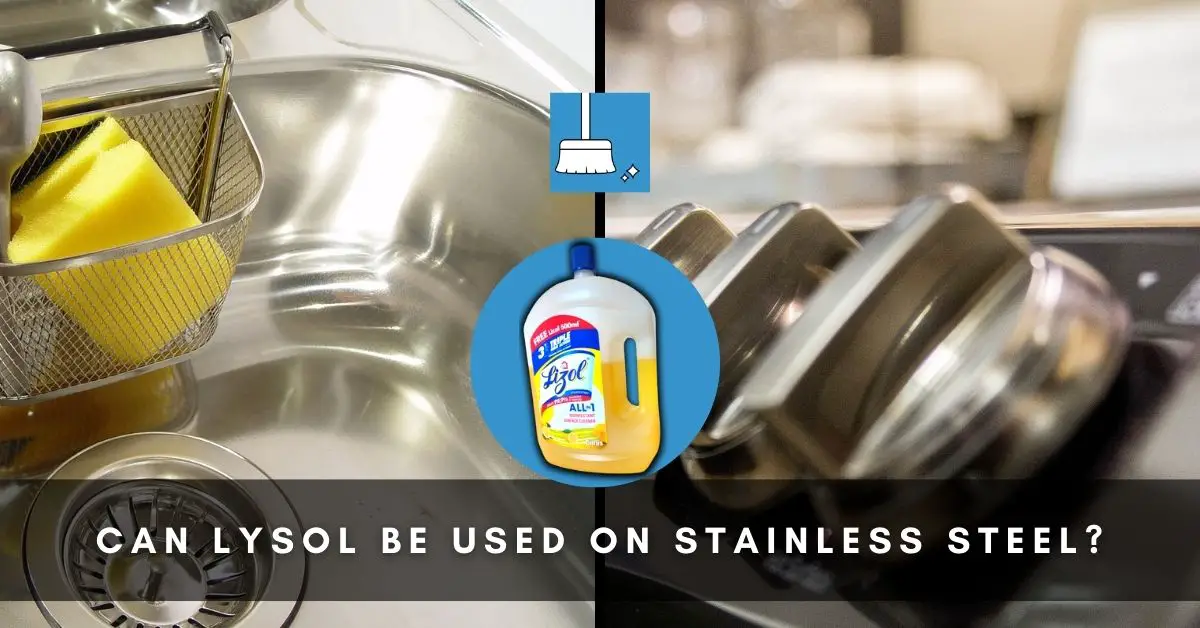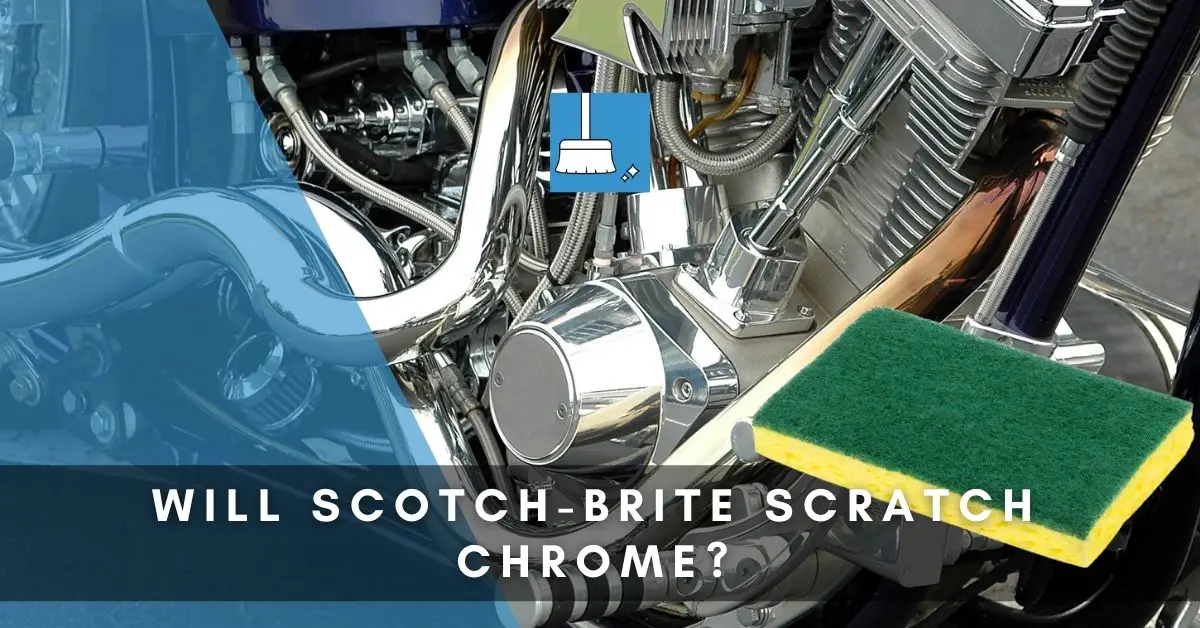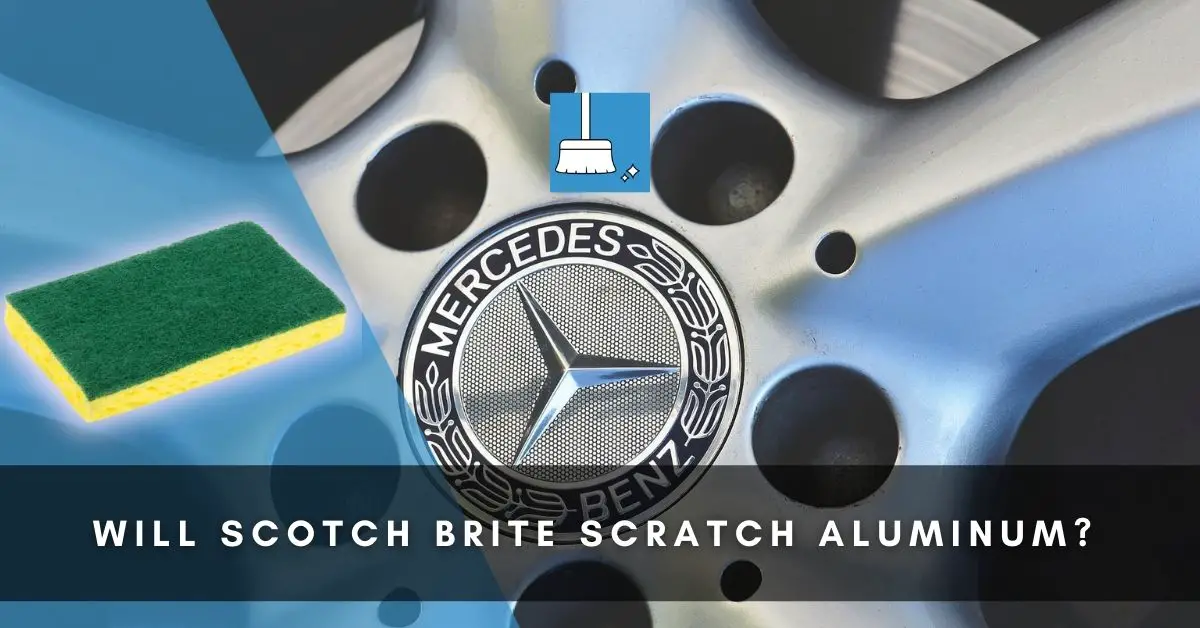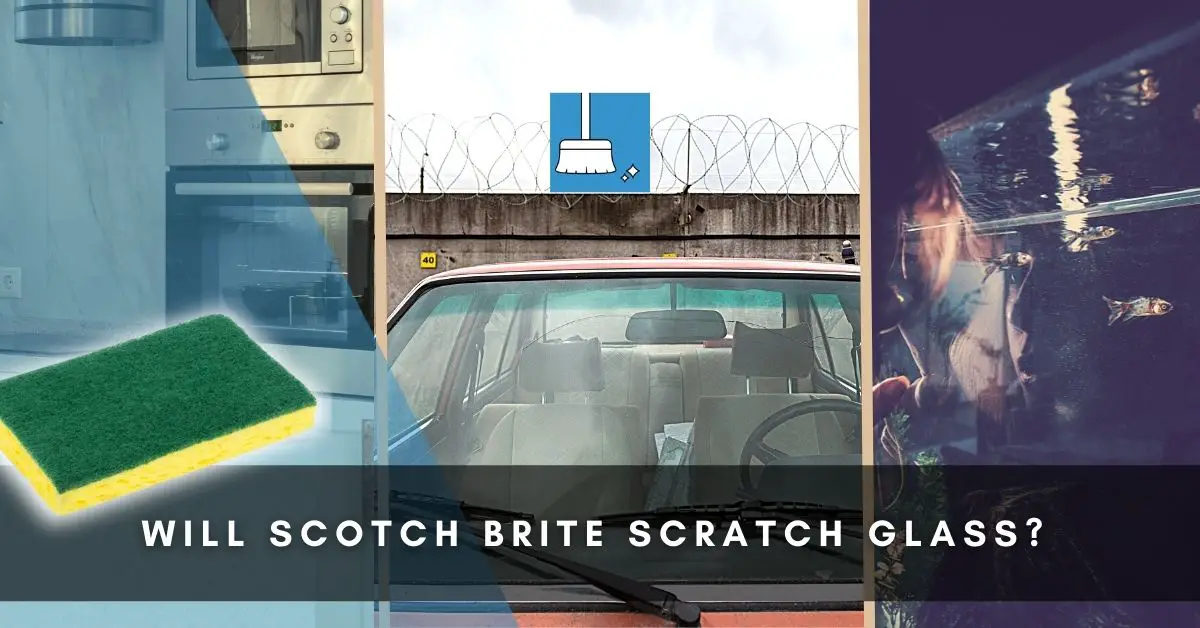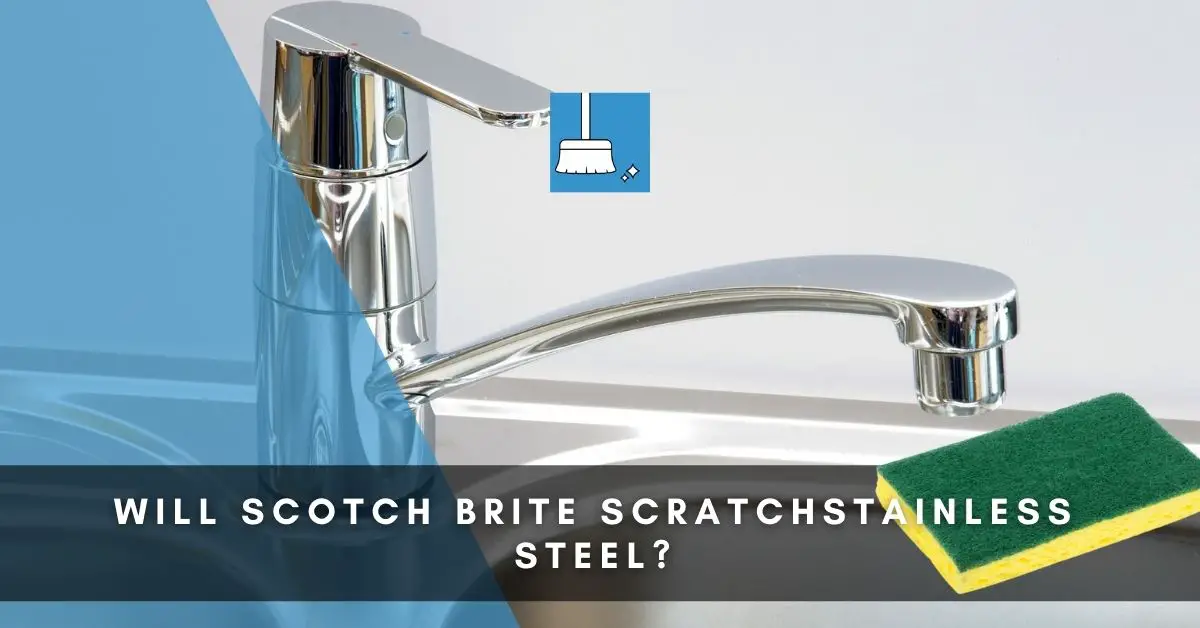Imagine you are scrubbing clean your house and notice the sink has stain marks on it. You may have used a product that contains bleach to clean the sink. What to do if you use products that contain bleach to clean items of steel and what should be used instead.
The article explains the usage of various different Lysol products on stainless steel items and the ways to clean and disinfect them.
Can Lysol Be Used on Stainless Steel?
Lysol has a variety of cleaning products, some of which contain bleach, and some do not. The Lysol products which contain bleach should not be used on your stainless-steel utensils or sinks. Read the product instructions beforehand and use these products as directed.
Any item which contains bleach or bleach itself should not be used on stainless steel.
Various Lysol Products & Their application on Stainless Steel
Below are 5 Lysol products and the possibility of application on stainless steel..
Lysol® All-Purpose Cleaner
This Lysol Cleaner is designed to kill germs and remove soap scum as well as grease. It should only be used on non-porous hard surfaces. Stainless steel is a non-porous material, which makes this cleaner an ideal option to use.
# To use for general cleaning, spray on the stainless steel surface and wipe with a clean cloth.
# For removing grease, spray and leave it for a few minutes before wiping with a sponge.
# To sanitize a SS surface, spray on a pre-cleaned surface and leave it on for 10 seconds. Wipe with a clean cloth.
# To disinfect SS surfaces, spray on the pre-cleaned area, leave for 2 minutes and wipe with a clean cloth.
If any of the surfaces come into contact with food, rinse those surfaces.
Lysol® Disinfectant Spray
This spray is formulated to kill 99.9% of bacteria and viruses, including the Covid-19 virus and its variants.
It can be used on soft surfaces. Although stainless steel is not a soft surface Lysol’s official website explicitly mentions surfaces such as kitchen sinks, refrigerator exteriors, and even door knobs that can safely be disinfected with this spray. These surfaces are usually made of stainless steel so it is safe to assume that the spray is safe on SS surfaces.
Also, Lysol spray does not contain bleach, so it would not harm stainless steel surfaces.
It kills various germs found on hard non-porous surfaces such as the flu viruses, rhinovirus, rotavirus, strep and staph bacteria, e-Coli, salmonella, and fungi such as mold and mildew.
Caution: When Lysol spray is used in the kitchen, food contact surfaces must be rinsed. If it is not rinsed well, the chemicals in the products will come into contact with your food.
To sanitize hard surfaces, spray and allow to air dry.
To sanitize soft surfaces, spray till the area is wet and allow to air dry. Do not use this spray on clothing.
To disinfect surfaces, the surface must be wet for 3 minutes, then allow to air dry.
Ensure you store the cleaning products in a safe place, away from pets and children.
Lysol® Disinfecting Wipes
Under the above umbrella, there are 4 products, namely:
• Lysol Disinfecting Wipes
• Lysol Disinfecting Wipes – Brand New Day
• Lysol Disinfecting Wipes – To Go Pack
• Lysol Disinfecting Wipes – Plant-Based Fibers
These wipes eliminate 99.9% of germs, including 8 cold and flu viruses and the Covid-19 virus.
The wipes can also be used to remove allergens such as dust mite waste, pollen, mold, and mildew. Many people also keep these wipes handy to clean any accidental stains on their clothes.
You can use them to clean and disinfect household surfaces in the kitchen (sinks and counters), doorknobs, refrigerator exteriors, devices such as your smartphone, other electronic gadgets, and frequently touched items like the remote control.
To sanitize a SS surface, use the wipe on a pre-cleaned surface and let it air-dry.
To disinfect a SS surface, use on a pre-cleaned surface and let it remain wet for up to 4 minutes.
Lysol® Disinfectant Concentrate
This disinfectant concentrate product is designed to disinfect hard non-porous surfaces only, such as bathroom surfaces, countertops, doorknobs, floors, and the exterior of appliances.
So if you have doorknobs and stainless steel appliances, use this disinfectant to sanitize and disinfect those surfaces.
– To clean stainless steel surface areas, dilute 2 ½ tablespoons in one gallon of warm water. Wipe the SS area with a sponge or mop.
– To disinfect a SS surface, add 5 tablespoons to one quart of water. Wipe or mop the areas and let it remain for 10 minutes before rinsing with water.
Lysol® Power Bathroom Cleaner
The bathroom cleaner is specially formulated to clean bathroom surfaces such as tiles, tubs, showers, and sinks. and to get rid of limescale and soap scum.
Since these surfaces are mostly porcelain, ceramic, marble, etc., the bathroom cleaner is not ideal for cleaning stainless steel surfaces. However, chrome fixtures can safely be included in the “can be cleaned” list.
It also prevents the formation of mold and mildew. and also kills viruses such as rhinovirus, rotavirus, and flu, and bacteria such as salmonella and staph.
How Do You Disinfect a Stainless-Steel Sink? (Best Ways!)
Your sink is in constant use, so you should disinfect it regularly. There are various products you can use to disinfect your sink, as explained below.
Before you disinfect it, make sure the sink is empty and clean it with warm water and soap. Avoid using metallic sponges as these will scratch the stainless steel surface.
1- Vinegar
vinegar is a natural disinfectant and can be safely used to disinfect stainless steel. Combine water and vinegar in equal parts and using a spray bottle, spray it in the sink and wipe after a few minutes.
2- Lysol® Disinfectant Spray
This product can be used to clean your stainless-steel sink. Pre-clean the sink and spray the disinfectant and let it remain for 3 minutes. Allow to air dry.
3- Rubbing Alcohol
This is also known as isopropyl alcohol. Combine with water in equal parts and spray on the pre-cleaned sink. Allow to sit for 20 minutes and then wipe the sink with a clean cloth.
How To Disinfect Stainless Steel Appliances?
Stainless steel appliances need to be well-maintained. Appliances such as refrigerators, ovens, dishwashers, and washing machines are frequently handled by more than one person leading to contamination.
Use a microfiber cloth to wipe the appliances to avoid scratching the surface.
A cleaner will clean the appliance, not disinfect it. Use the following to disinfect the surface of the appliances:
Rubbing alcohol
A concentration of 70% is effective in disinfecting surfaces. Spray the pre-cleaned area with rubbing alcohol and let it remain for 30 seconds. Wipe with a microfiber cloth. You can also dab the cloth in the rubbing alcohol and wipe the appliance exterior with it.
Vinegar and Olive oil
Fill a clean spray bottle with white vinegar and spray it on the appliance. Wipe it with a clean cloth. Dip the cloth in some olive oil and wipe the appliance again to give it a shine and to remove streak marks.
Lysol® Disinfectant Spray
Pre-clean the area and spray on the Lysol disinfectant spray. Let it stay on for 3 minutes and allow it to air dry.
How To Remove Lysol Stains from Metal
If Lysol products that contain bleach are used on stainless steel and copper, they can stain or corrode the metal.
If bleach is used on stainless steel and left on for longer than necessary, stains start to appear on the surface. This is corrosion, which forms the grey/brown stains.
Try the following products to remove stains:
1- Baking Soda
To remove a superficial stain, mix water with baking soda, and rub it on the stain with a brush. Keep applying till the stain is gone. Wipe the surface with a damp cloth.
If the stain is extensive, wipe the area with a wet cloth and sprinkle on baking soda. Leave it for an hour. Then, sprinkle water on the area and scrub with a brush in the direction of the grain. Wipe the surface with a damp cloth.
2- Vinegar
Mix vinegar and water in equal parts and spray it on. Wipe off with a cloth.
3- Bar Keeper’s Friend
This is a cleaning product that contains oxalic acid, and it is used to remove stains and rust. It can be used on stainless steel, aluminum, copper, steel, and chrome.
Apply and use a sponge to clean. You may need to use it a few times to remove stubborn stains.
What Not to Use on Stainless Steel
While cleaning and disinfecting, there are certain items which should be avoided, such as:
- Scouring pads and steel wool – Scouring pads such as scotch brite will scratch the stainless steel surface.
- Bleach – This will create stains by corroding the surface.
- Cleaners that contain ammonia – Will corrode stainless steel
- Magic eraser – Will leave subtle scratches on stainless steel surfaces.
- Pumice stones – Pumice stones are rocks made of volcano lava and water. These are abrasive enough to scratch stainless steel.
Tip: Do not wipe against the grain as it will cause streaking.
Conclusion!
Generally, Lysol cleaners can be used on most stainless steel surfaces. However, The ones containing bleach must be avoided.
Do not combine products or mix bleach with any item. Always make sure you use the right product for the right surface. If wrong products are used on certain surfaces, damage may be extensive and irreparable. Also, avoid using expired Lysol products on stainless steel.
If you are in doubt about what to use to clean and disinfect your stainless-steel appliances, check the instruction manual and follow the guidelines.

